Trip Report: Uganda
Visited in September 2023
Uganda, also known as the Pearl of Africa, is another destination in East Africa that attracts more and more tourists every year. And for good reason. Uganda not only offers classic safaris in which you can see the big five. It is also one of three countries in the world where you can see mountain gorillas in their natural habitat.
Having already done a gorilla trekking in Rwanda in 2020, I came to the conclusion that this is the best animal encounter the world has to offer. Spending an hour with gorillas in the wild is simply something very special and only few people experience this in their lifetime.
One reason for this is the exorbitant prices that many simply cannot afford. In Rwanda, the permit for gorilla trekking costs $1,500. The good news is that in Uganda it costs less than half, but is still very expensive at $700. Nevertheless, after Rwanda I knew that I definitely wanted to experience this a second time. Therefore, it was also clear what I would do in Uganda once I visit the country on my trip to all the countries in the world.
Uganda was my 157th country and the second stop on a two-week trip through East Africa. After three short but fun days in Burundi, Uganda Airlines took Kati and me from Bujumbura to Entebbe, where Uganda’s international airport is located.
When I was in Rwanda, I had my entire trip organized by a tour operator. This meant that I booked a package that consisted of transportation, activities, accommodations, and permits for the primate safari. This time we were only going to hire a driver and organize all the activities ourselves. This would save us a lot of money, we thought (and I guess it turned out that way).
We booked a driver for seven days through rentadriveruganda.com. It cost 80 USD per day without fuel. That means $560 in total and as a cost estimate for the fuel they gave us $420, which turned out to be pretty accurate. Thus the price for the transport was close to $1,000, which I found fair for two people. By the way, they also booked the chimpanzee and gorilla permits for us. Apparently, you can also do that directly via the Uganda Wildlife Authority without paying a (small) surcharge like we did.
Besides the Bwindi Impenetrable Forest, where the mountain gorillas live, we visited other national parks in Uganda. Our route was as follows: Entebbe – Murchison Falls NP – Kibale NP – Queen Elizabeth NP – Bwindi NP – Entebbe.
That meant long days in the car. Most of the time it took at least five hours to get from one place to the next. Only the distance between Kibale and Queen Elizabeth NP was shorter (about three hours). The drive from Bwindi to Entebbe even took almost 9 hours, but we had an overnight stay in the middle.
Here are a few words about each of the national parks:
Murchison Falls National Park
This national park is located about six hours north of Entebbe and is named after a huge waterfall within the park. The river into which the waterfall flows offers boat safaris. Classic game drive in the park is also available.
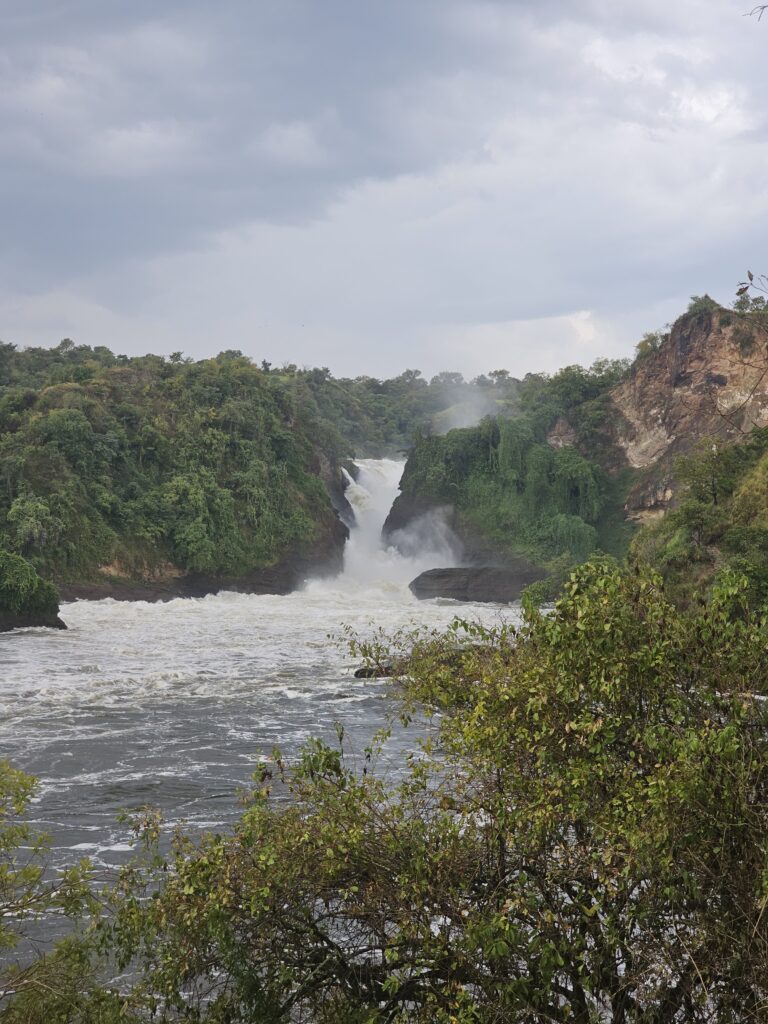
We did both as well as a short hike to the top of the falls. Except for the hike, which we did during heavy rain and was therefore a bit miserable, all the activities were cool. From the boat we saw a lot of hippos, some crocodiles, an elephant, two giraffes and other animals.
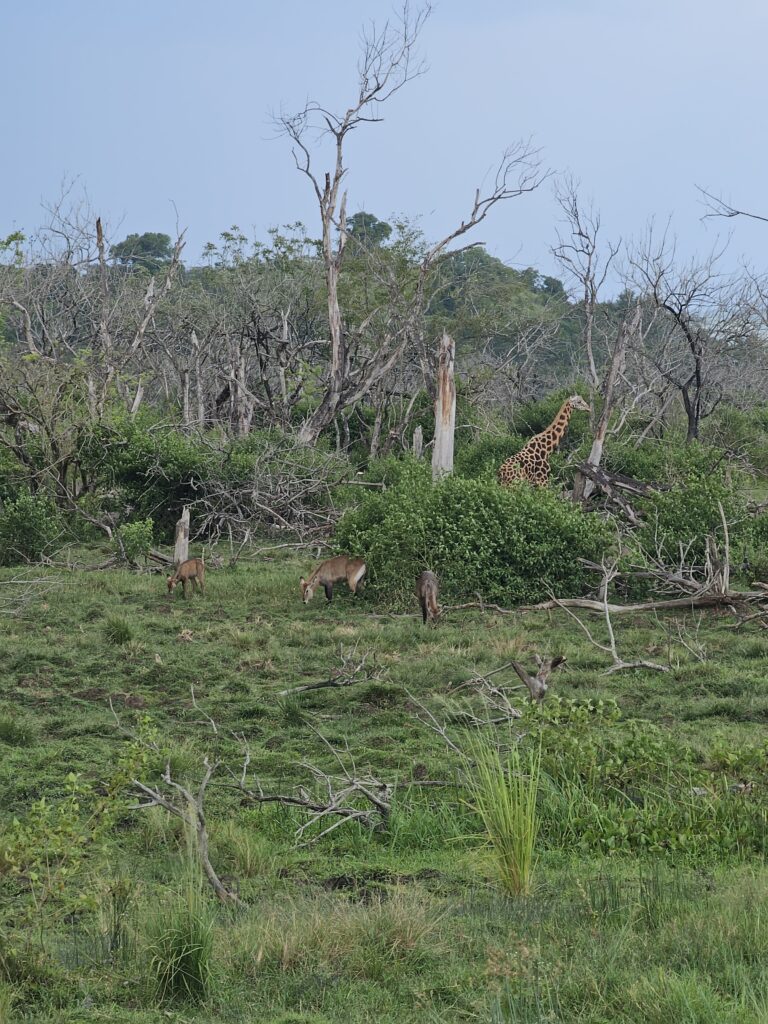
The game drive was also good because we saw a lot of animals. Besides, the park impresses with stunning nature. Unfortunately we didn’t see any predators, but I think that lions get too much attention on these safaris anyway, while other animals are often ignored.
Conclusion on Murchison Falls National Park: another very good safari park in Africa. While not quite on the same level as the Serengeti or Etosha, it’s definitely a great park with fun activities.
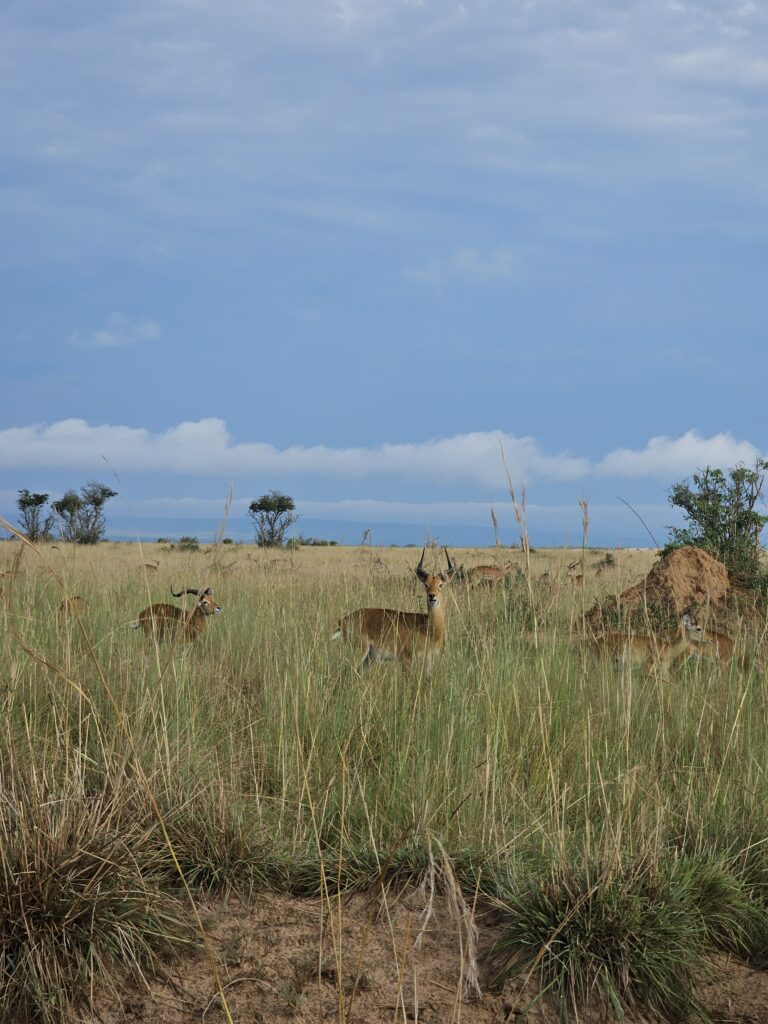
Kibale National Park
Besides gorillas, you can also see chimpanzees in their natural habitat in Uganda. I already did a chimpanzee trekking in Rwanda but found it disappointing. We actually saw the monkeys from quite a distance. In fact, we just saw small black dots moving on tree tops. They were not visible to the naked eye.
Lonely Planet says that chimpanzee trekking in Uganda is much better than in Rwanda, as the primates in Uganda are less timid than their brothers and sisters in Rwanda. That’s why I was looking forward to this activity and it was one of my top priorities in Uganda. The permit for chimpanzee trekking costs 200 USD and is therefore much cheaper than the gorilla permit, but still expensive. Just like the gorilla trekking, only a certain number of people are allowed to visit the primates per day.
The chimpanzee trekking started exactly the same as the one in Rwanda. Some black dots were moving on the top of a tree. In addition, shells of fruit kept flying down, sometimes just next to your head. After about ten to fifteen minutes, however, it got really good, because the monkeys were now coming down.
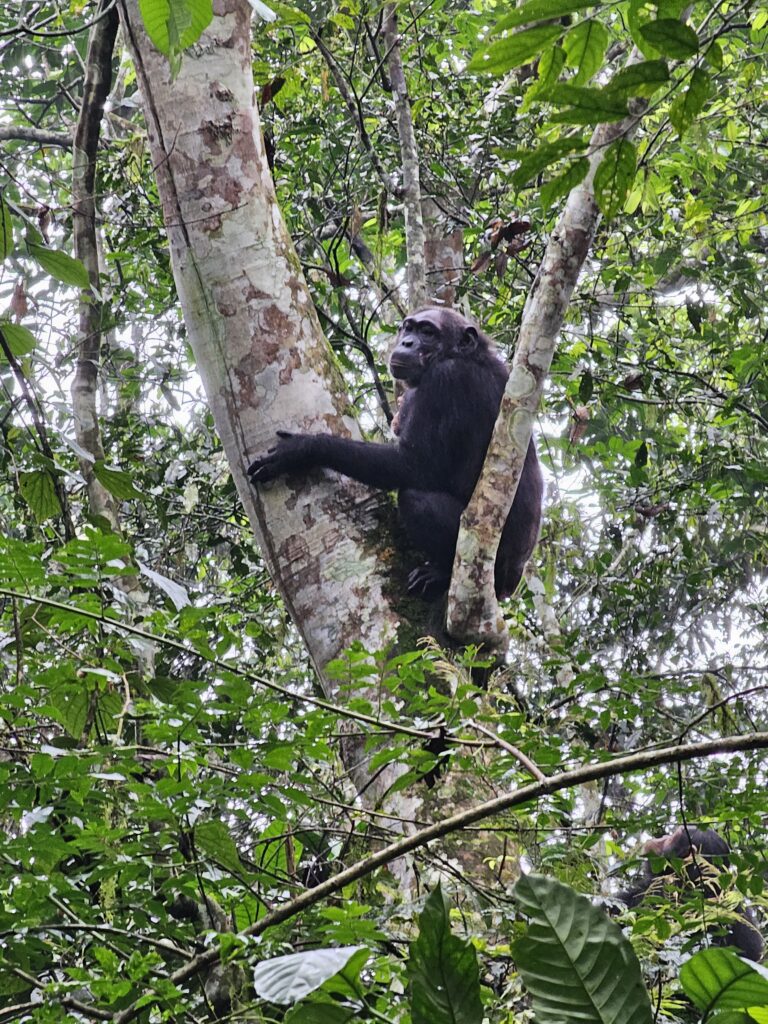
Chimpanzees – unlike gorillas – are pretty fast, and when they were moving on the ground it wasn’t easy to follow them. Nevertheless, we ended up seeing a lot of chimps from close up, sometimes we were only about four to five meters away from the animals.
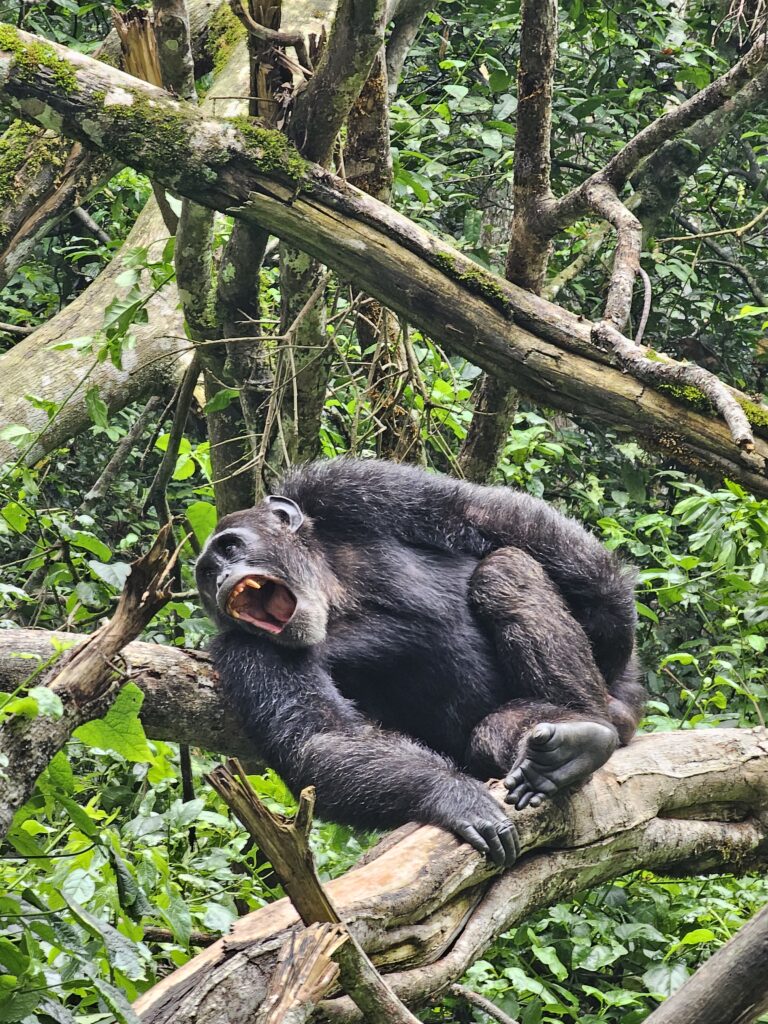
For this reason the chimpanzee trekking was a complete success. Definitely a better experience than in Rwanda. However, it is a safari and anything can happen. According to our guide, sometimes the chimpanzees stay on the trees and don’t come down, which certainly makes the experience less interesting.
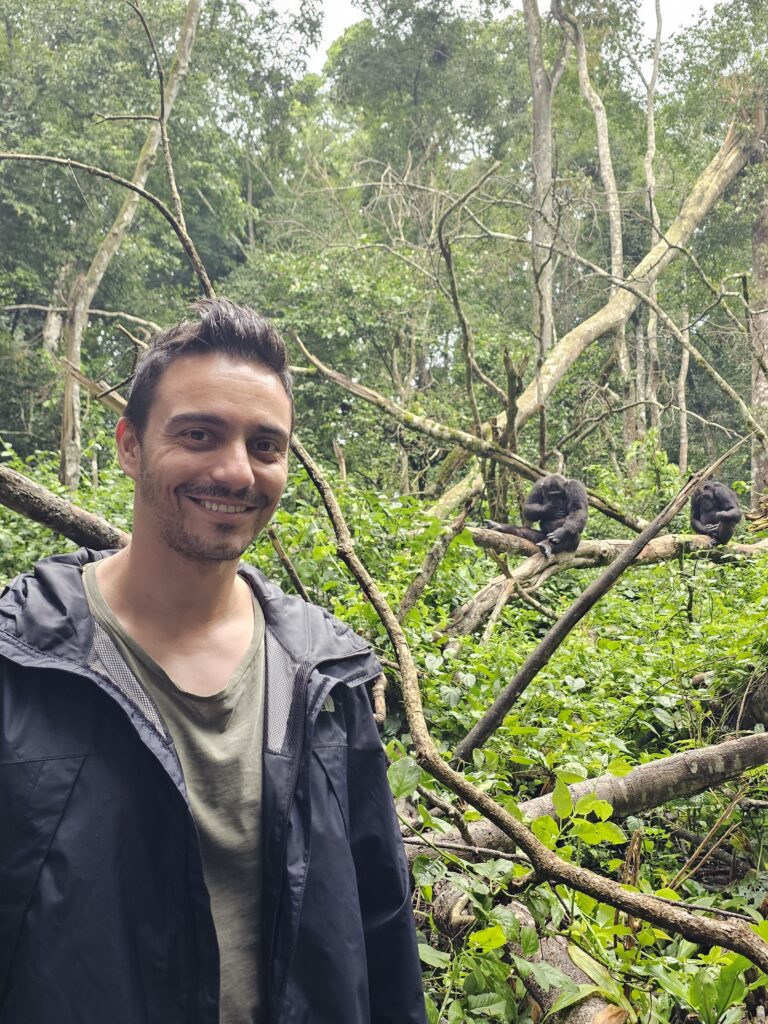
In the afternoon we did the Bigodi Swamp Walk. For this activity you pay 50,000 shillings, which is about 13 dollars. A local guide leads you through a swamp where you can learn about birds and endemic monkeys. In fact, if I remember correctly, 13 smaller species of monkeys live there, of which we saw three.
This swamp walk was honestly a bit boring and we also insisted that it doesn’t last three hours as scheduled but only one. Would I recommend this activity? Not really. However, the money from the tourists is used to build schools, so at least we contributed to a good thing.
Queen Elizabeth National Park
While we were lucky in Murchison Falls and Kibale National Park, we saw almost no animals in this park. Our driver said that the Queen Elizabeth National Park would be Uganda’s best park to spot animals. After all, the park is flat, which offers less hiding places for the animals.
We have indeed seen one or the other animal. However, mainly those that are considered “uninteresting”. Like antelopes or warthogs. We also lost a lot of time looking for lions. Our driver once received a call that lions were spotted somewhere. But we needed more than half an hour to arrive at this place and in the end the animals were sleeping under a tree about 200m away. We had to use the x30 zoom of my cell phone to see them.
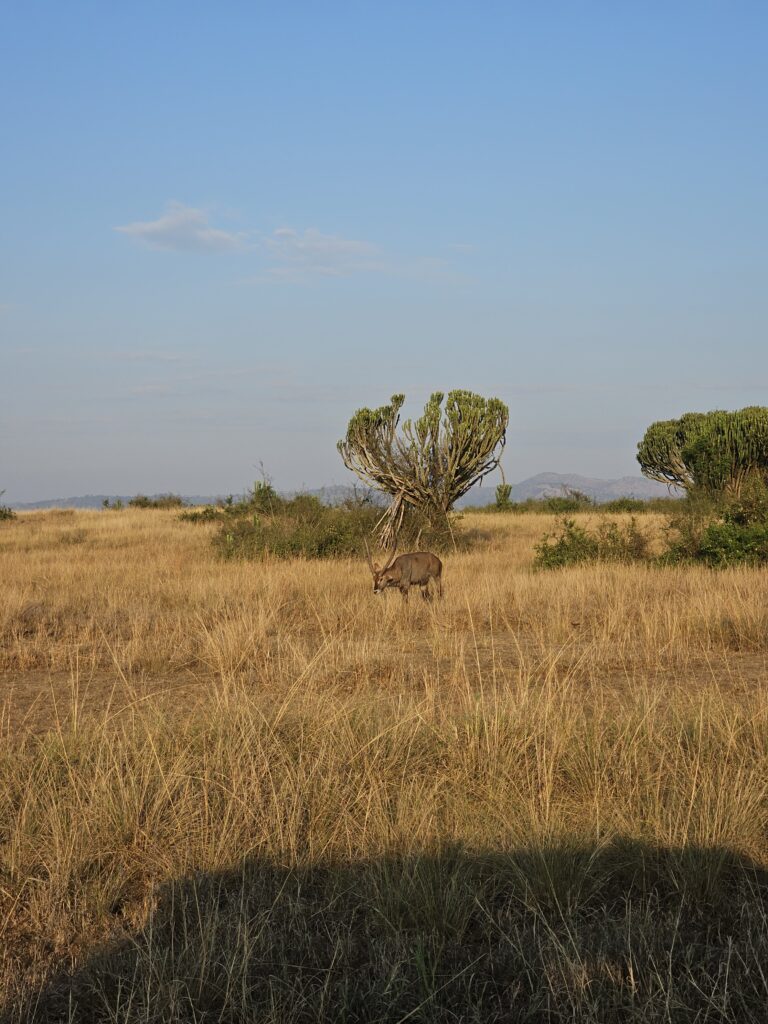
So the Queen Elizabeth National Park was rather disappointing. But as already said, a safari is a safari and it’s always a matter of luck.
Besides safari, however, there is another activity you can do here that I thought was really cool. We actually did it on the way from Kibale to Queen Elizabeth National Park and I would recommend you do it the same. I’m talking about the Top of the World trail, which is a short hike that takes you past various crater lakes.
Uganda is a country with many volcanoes, none of which are active, thankfully. The crater lakes are a remnant of these volcanoes and serve the locals today for swimming and even fishing.
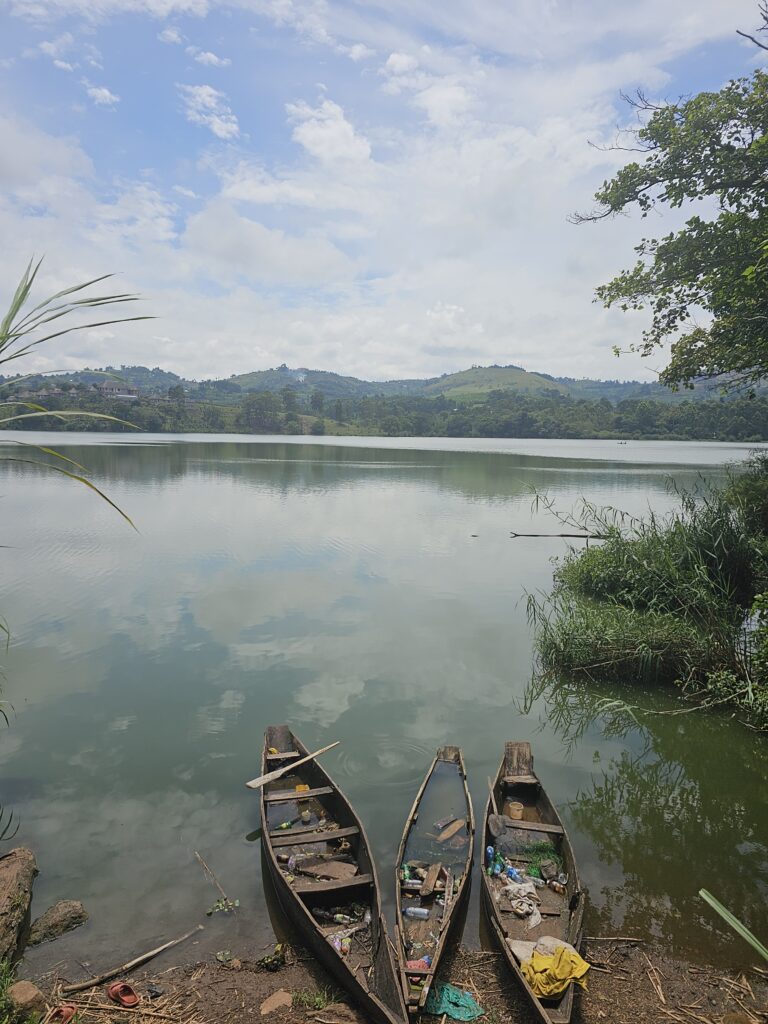
According to our local guide the hike takes three hours. Don’t believe it, we had a little longer than 90 minutes – despite several breaks. The hike is anything but difficult, although the last part is uphill. At the top and on the way up, however, you are rewarded with stunning views.
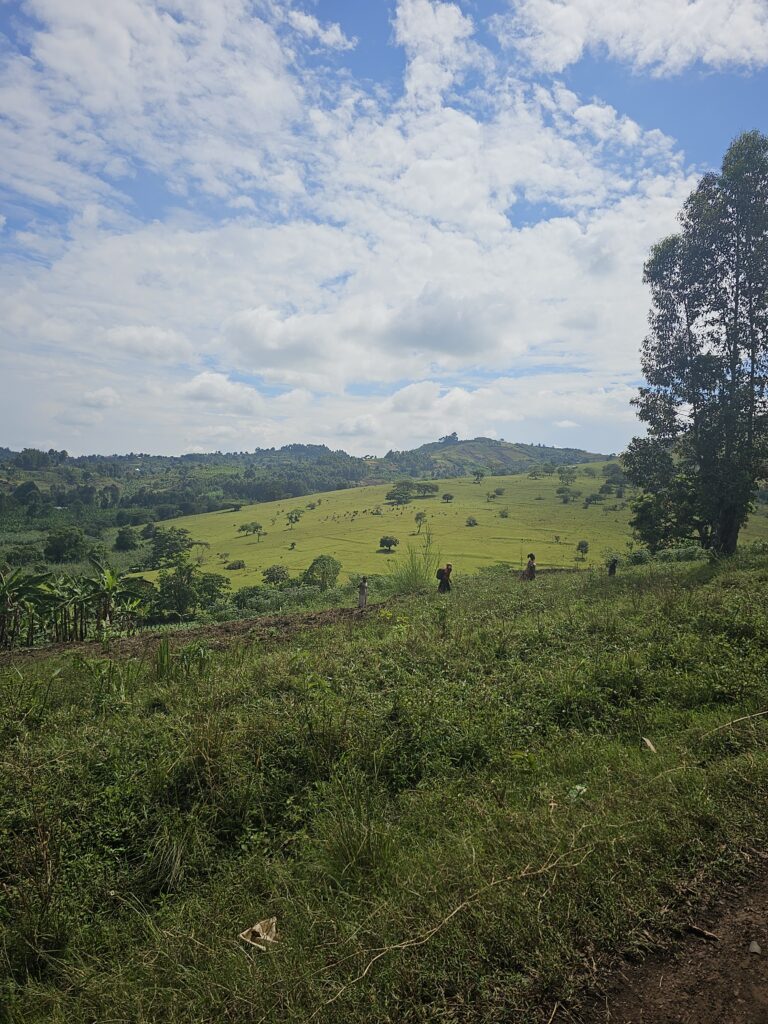
The trail ends at the “top of the world”, a place where there is a hotel with a restaurant. From this place you can see all three crater lakes and you can also reward yourself with a cold drink.
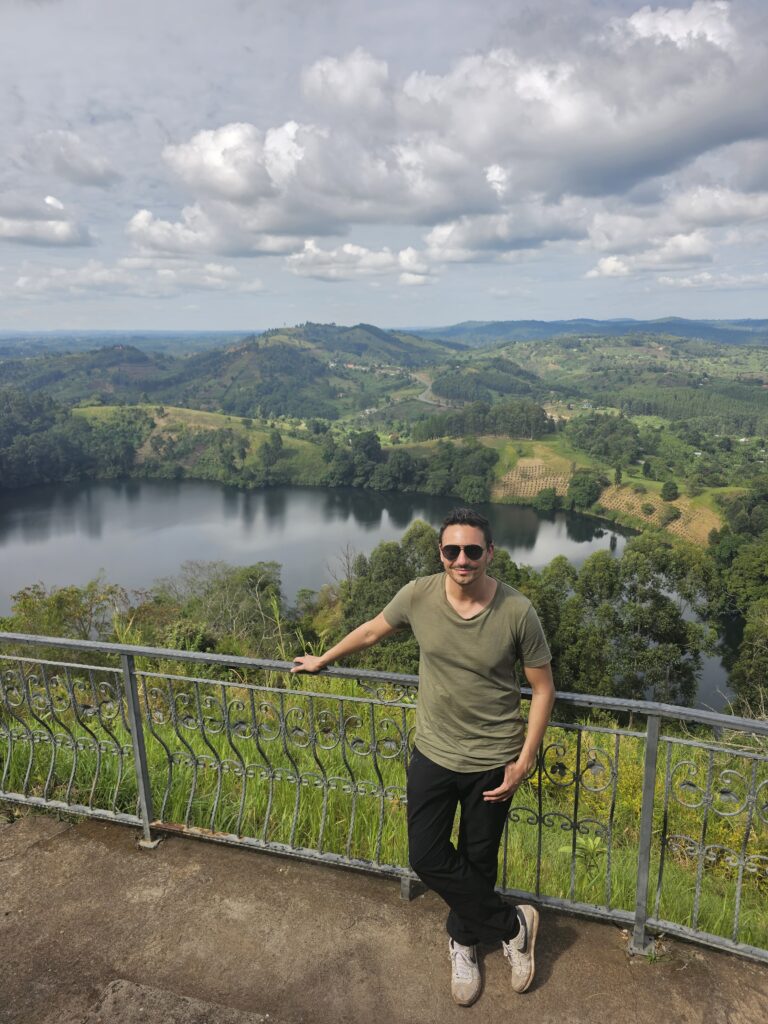
For me this trail was a little highlight, because I never heard of it before I was in Uganda. I found the landscapes I saw there incredibly beautiful. Absolute recommendation if you are in this region.
Bwindi Impenetrable Forest
Now for the highlight, the gorilla trekking. I told Kati that I expect to see less people in Bwindi than in the other parks. On the one hand because of the prices for the gorilla permits and on the other hand because of the remoteness of this national park.
Oh, how wrong I was. At the briefing before the trekking there were more people than at any other activity in Uganda. I guess I was a bit naive, because in the end this is still the reason why most people come to Uganda. For the gorilla trekking, all participants are assigned to one gorilla family each. Only eight people can visit a family per day. This way the group is not too big to make the gorillas nervous.
At the same time the rangers ensure that the visitors only spend an hour with the gorillas and not more. This time is considered manageable for the inhabituated gorillas. Inhabituated means they are used to people and do not react aggressively when you visit them.
In Rwanda, we had to walk about 45 minutes before we saw the gorillas. In Uganda, it was definitely a tougher hike. Due to a heavy rain during the previous night, it was not possible to drive to the starting point by car. Instead, we had to walk a larger distance, which made the hike about two hours longer.
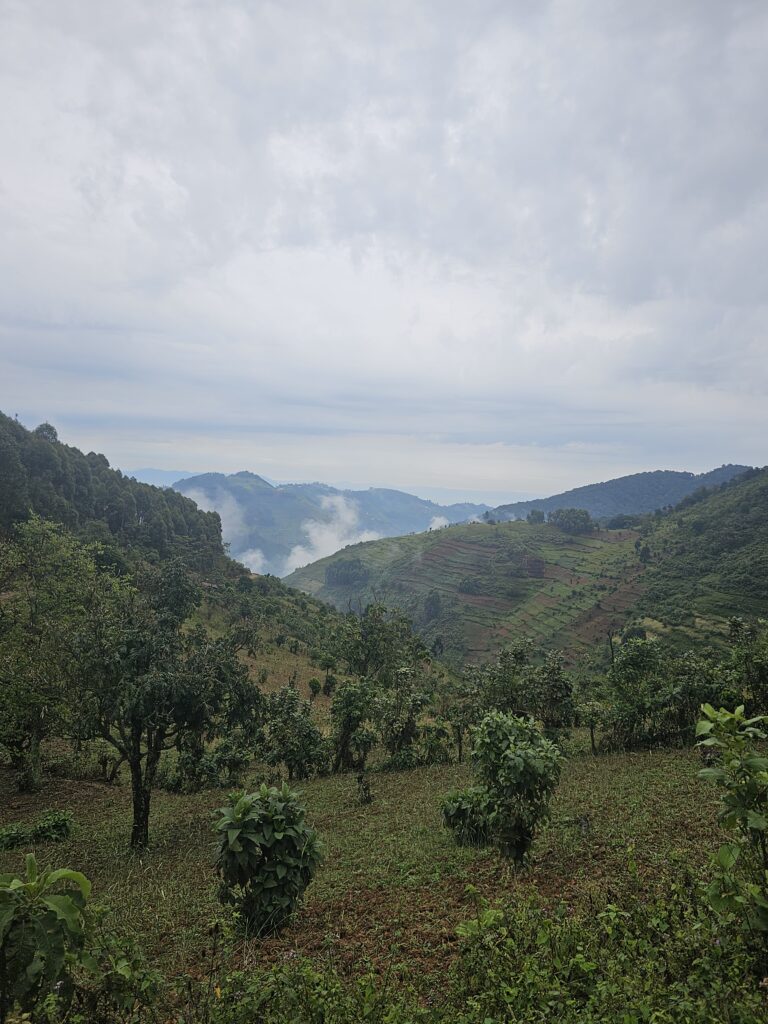
Unfortunately, the safari rules I have already described also apply to gorilla trekking. While it is guaranteed that you will see the gorillas (imagine paying 700 USD and in the end you don’t even see the apes), you don’t know under what conditions. At best, you see the gorillas in an open field; at worst, they hide in dense bushes that obscure most of your view. In Rwanda, the setting was probably 3 out of 5 stars. Partly the gorillas were in the bushes, but you could also see them frequently.
In Uganda, unfortunately, it was not so good. The gorilla family was on a steep hillside and some apes didn’t seem so keen on visitors and were hiding in the bushes. Other gorillas fortunately did not mind us. However, the hillside was also unpleasant, because you had no firm grip and moving was a bit difficult.
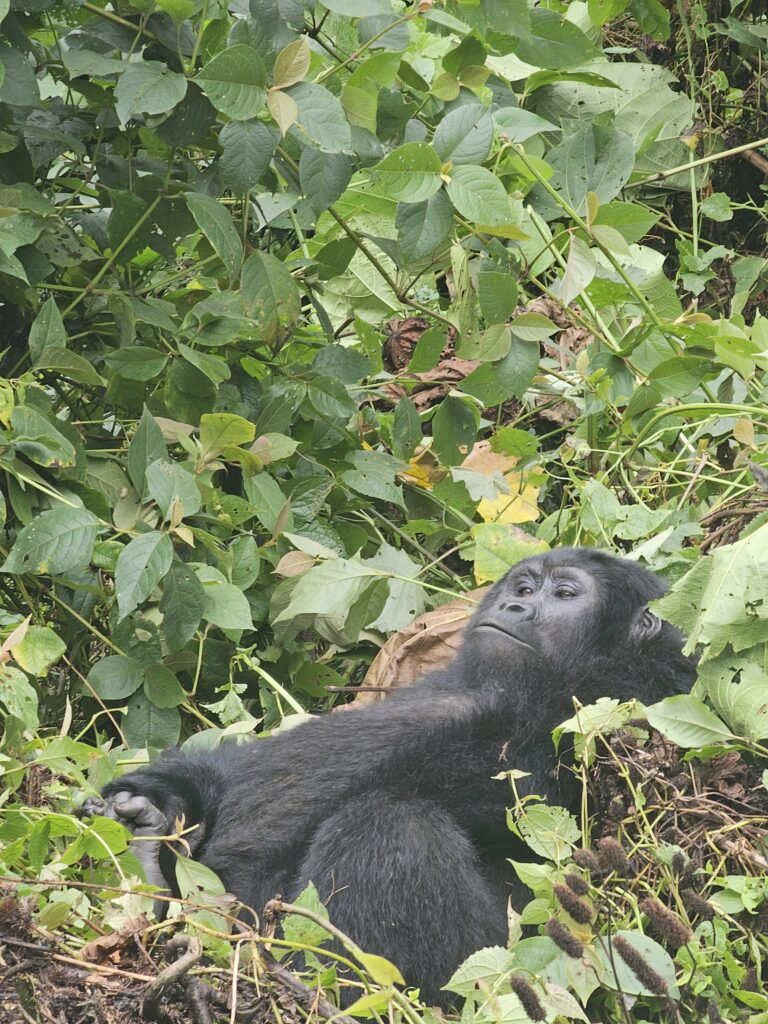
Nevertheless, we were able to get some very great impressions. Sometimes the gorillas were quite close. One even passed only about a meter in front of us. The official rule is that you have to keep ten meters distance to the gorillas. Neither in Rwanda nor in Uganda was this rule followed. Besides, the apes also come up to you and they obviously don’t know anything about this rule.
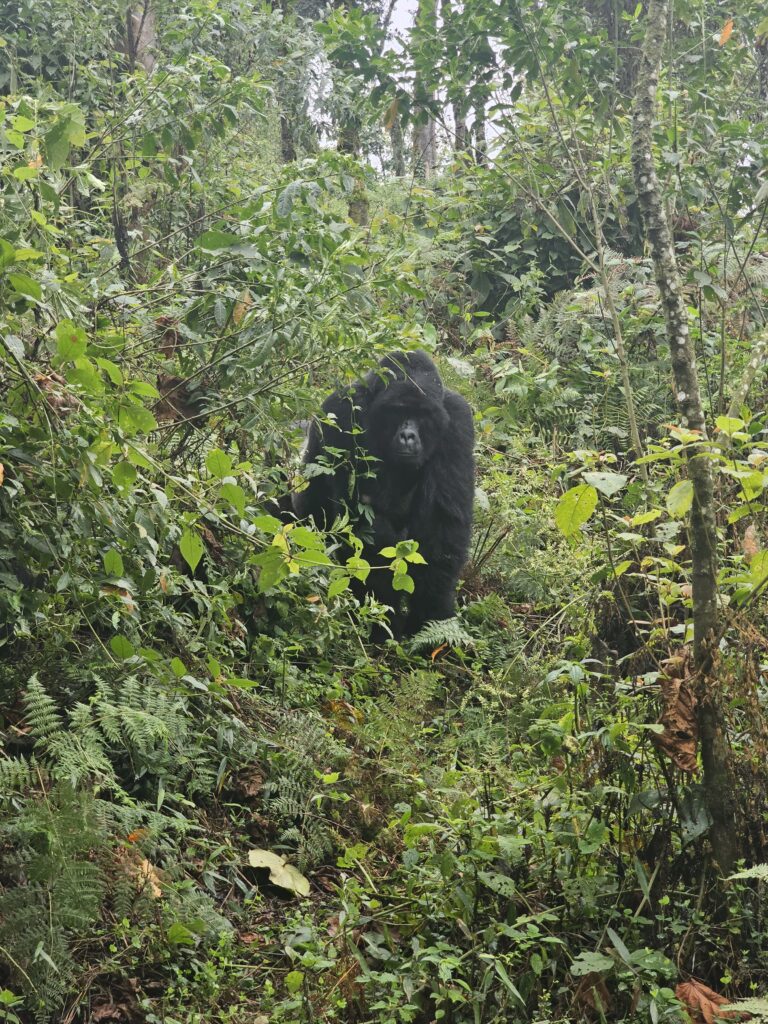
The end of the gorilla trekking was a disaster, though. Namely, there was a wasp nest near the gorillas. Unlike the gorillas, the wasps were far less hospitable and started attacking our group. Some of our group, including Kati and me, got several wasp stings and they were quite painful. They burned and felt like someone was putting out a cigarette on our skin.
After our group got dozens of wasp stings, the tour had to be cut short and we had to flee. Fortunately, there were only nine minutes left. Nevertheless, it was a sad end to this activity. And also a bit a scary one. The wasps liked to fly under our shirts and sting us there several times. One wasp gave me four stings in the chest using this tactic.
But well, I can only repeat that it is a safari and sometimes you win, sometimes you lose. Gorilla trekking in Uganda unfortunately didn’t feel like a win. More like a draw – especially compared to the gorilla trekking in Rwanda. We got some great impressions of the gorillas, but the wasps and also the place where we met the gorillas left a somewhat bittersweet taste.
How I would rate Uganda
Uganda can be compared very well to other East African countries that have similar characteristics. Rwanda, for example, is another destination bordering Uganda that allows encounters with primates. Furthermore, Uganda borders Kenya and Tanzania, the two heavyweights in East Africa, which offer world-class safaris as well as beach vacations. As a landlocked country, Uganda cannot do this.
So, how is Uganda compared to other East African countries? It really depends in which area. In certain aspects, Uganda beats its competitors such as Rwanda, Kenya and Tanzania. In other aspects, the other countries are better.
Let’s start with transportation. In Uganda, just like in the other countries mentioned, you need a vehicle to get from one place to another. Forget public transport, it will most likely take ages. So typically, you have a driver or you rent your own car. Unlike Kenya and Tanzania, you do not need to fly, which is certainly a plus compared to these two countries.
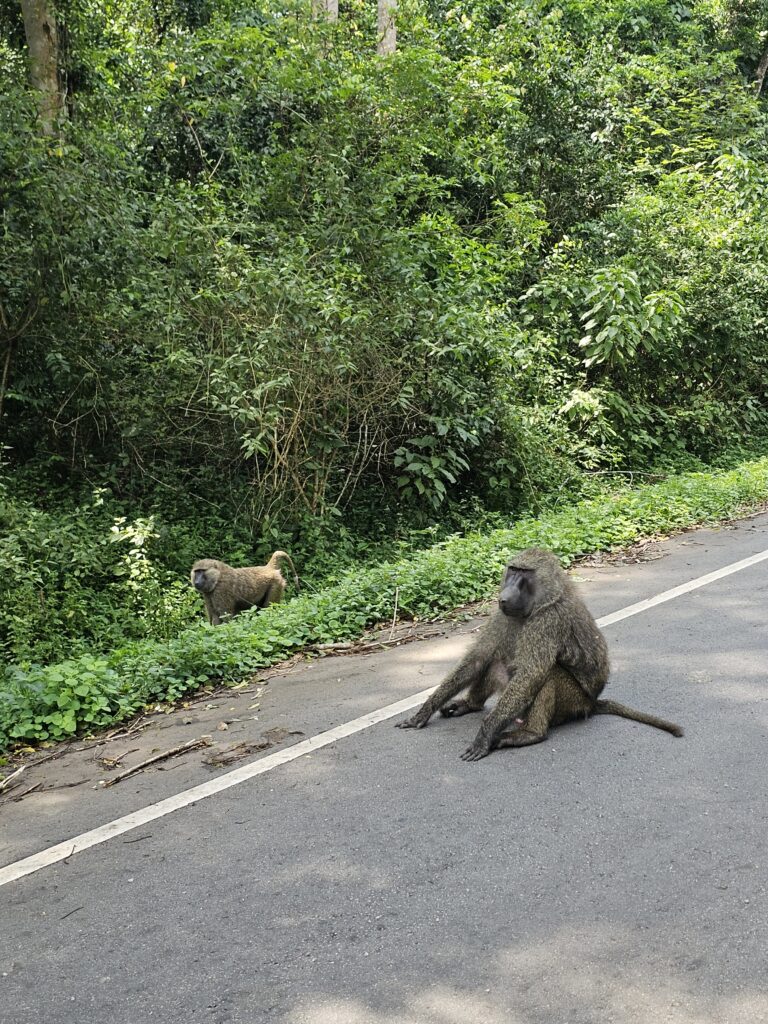
However, in Uganda you spend a lot of time in the car. In total, we drove about 27 hours in a week, which is almost four hours per day. Fortunately, the roads in Uganda are good. The most disturbing thing is the excessive number of speed bumps on the otherwise good (Chinese-built) roads. You can also drive faster in Uganda than in Rwanda and I also saw less accidents than in Rwanda.
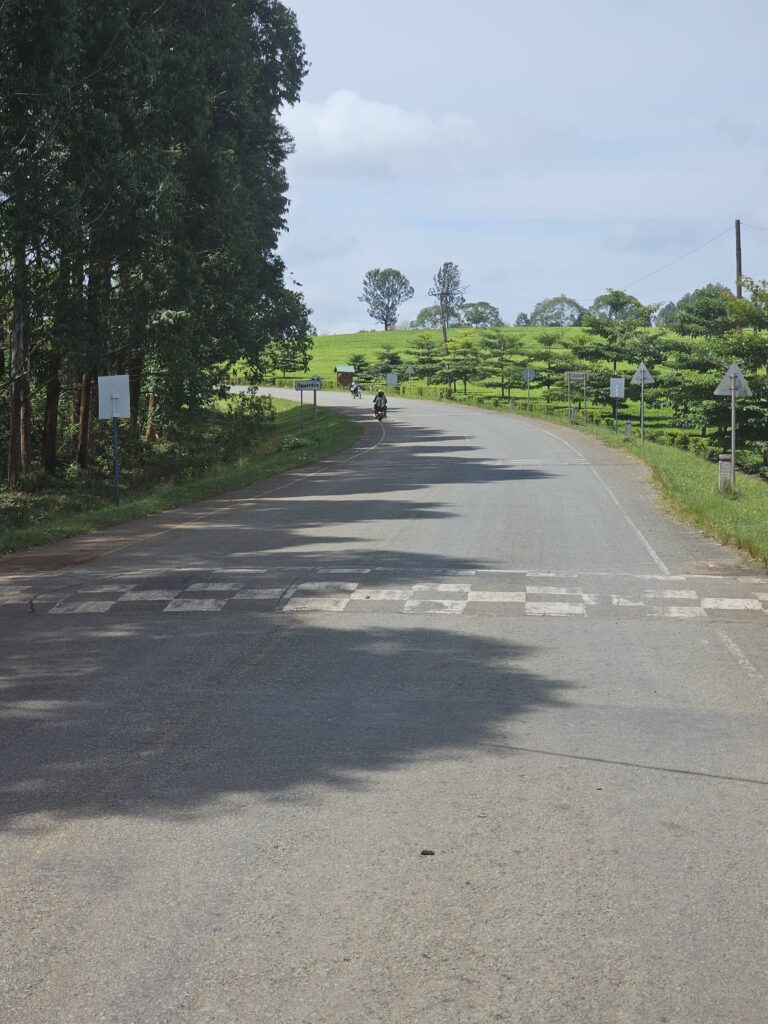
I would say that in terms of transport Uganda has still a small disadvantage compared to Rwanda because of the distances. Admittedly, it’s not a huge difference, because in Rwanda, too, you sometimes drive for a long time. However, since you don’t need to fly and you also have long driving days in Kenya and Tanzania, I would give Uganda the advantage over these two countries.
In terms of wildlife, Uganda offers on the whole a perfect mix of Rwanda and Kenya/Tanzania. On the one hand Uganda has the primates, on the other hand it has also good “classic” safari parks. So you get the best of both worlds.
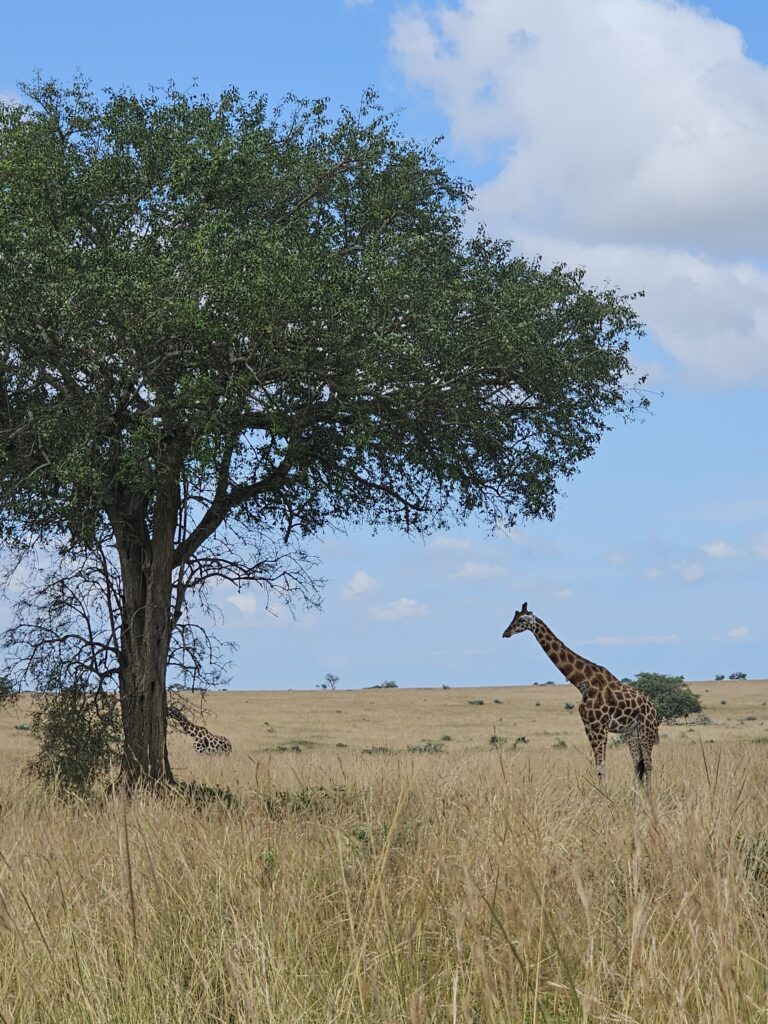
The park entrance fees are actually more than fair in Uganda. 40 dollars each in Murchison Falls and Queen Elizabeth for 24 hours. This is much less than in Kenya and Tanzania, where you pay almost double or triple. The parks in Uganda are also much cheaper than the Akagera National Park in Rwanda. And I have already mentioned how much cheaper the gorilla permits are in Uganda than in Rwanda.
Admittedly, neither Murchison Falls nor Queen Elizabeth can compete with the Serengeti/Ngorongoro in Tanzania or the Masai Mara in Kenya. However, this is rather because these national parks are the absolute elite among the African national parks. Nevertheless, Uganda is an excellent country for wildlife activities – certainly one of the best in Africa. If you then take into account the cheap park entrance fees, you can definitely say that Uganda has one of the best value for money when it comes to safari in Africa.
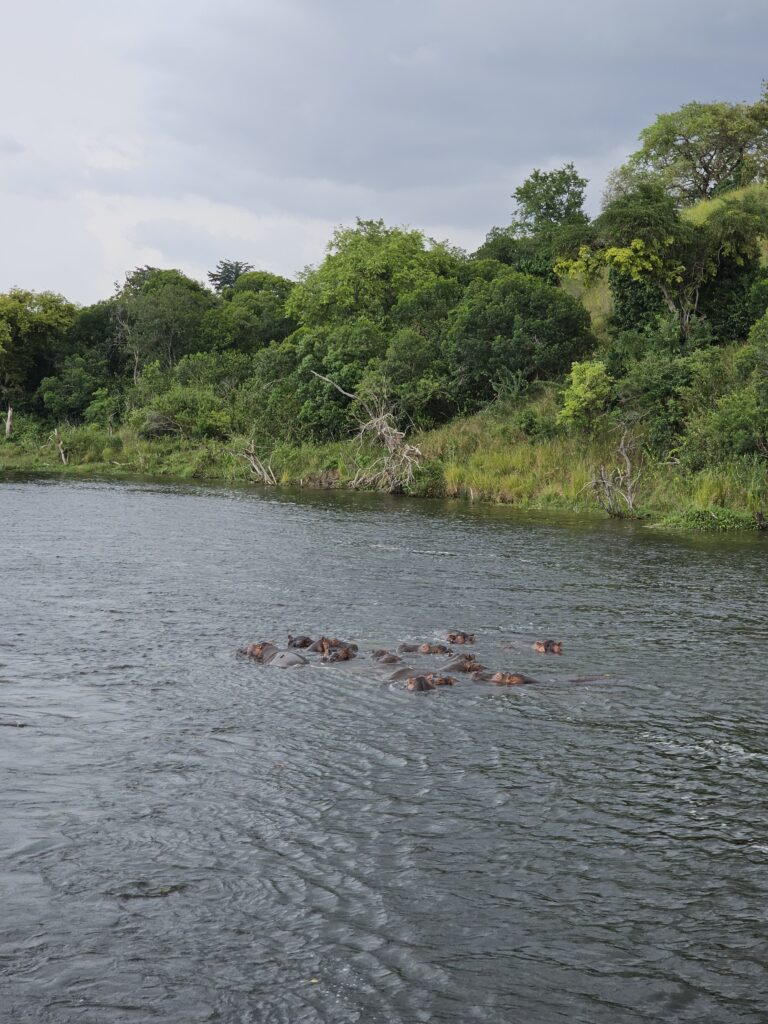
Speaking of prices… I found Uganda cheaper than Rwanda, Kenya and Tanzania. Not only the wildlife activities were significantly cheaper in Uganda than in the other three countries. I also felt the prices for the hotels and transport were cheaper, while for the food I think it was relatively similar in all three countries.
In terms of tourist infrastructure, I found Uganda to be a little more raw and less developed than the other three countries. Our lodges in Uganda were mostly okay, but to be honest in no case outstanding. Breakfast was included in every accommodation, in some lodges also dinner. Unfortunately, I have to say that I rarely ate well in the lodges and it was mostly average.
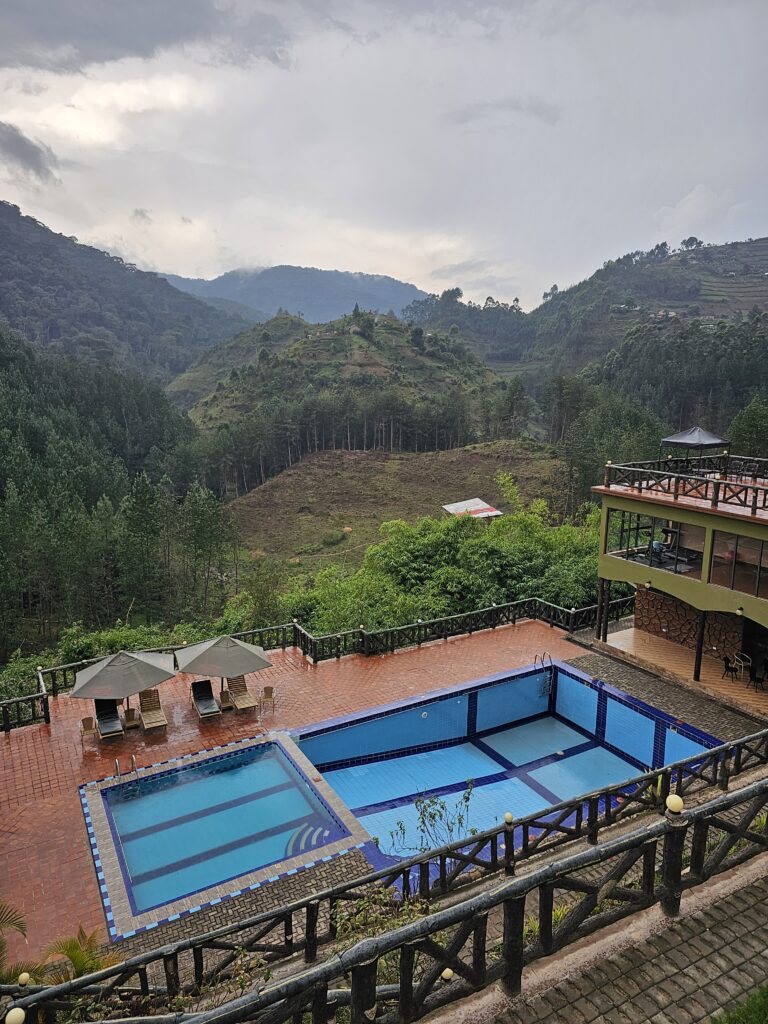
And speaking of general infrastructure, the internet was terrible outside of Kampala/Entebbe. Seriously, I found the internet outside the capital to be one of the worst 10 out of all the countries I have visited. Perhaps this is because I had a sim card from MTN. Airtel is supposedly the much better provider. However, the wifi in the lodges was also mostly very poor or non-existent.
How were the people in Uganda? I found them to be very friendly and a bit less reserved than those in Rwanda. We always saw many children on the side of the road in Uganda waving at us and shouting “Mzungu! Mzungu!” (term for white people), which was always very nice.
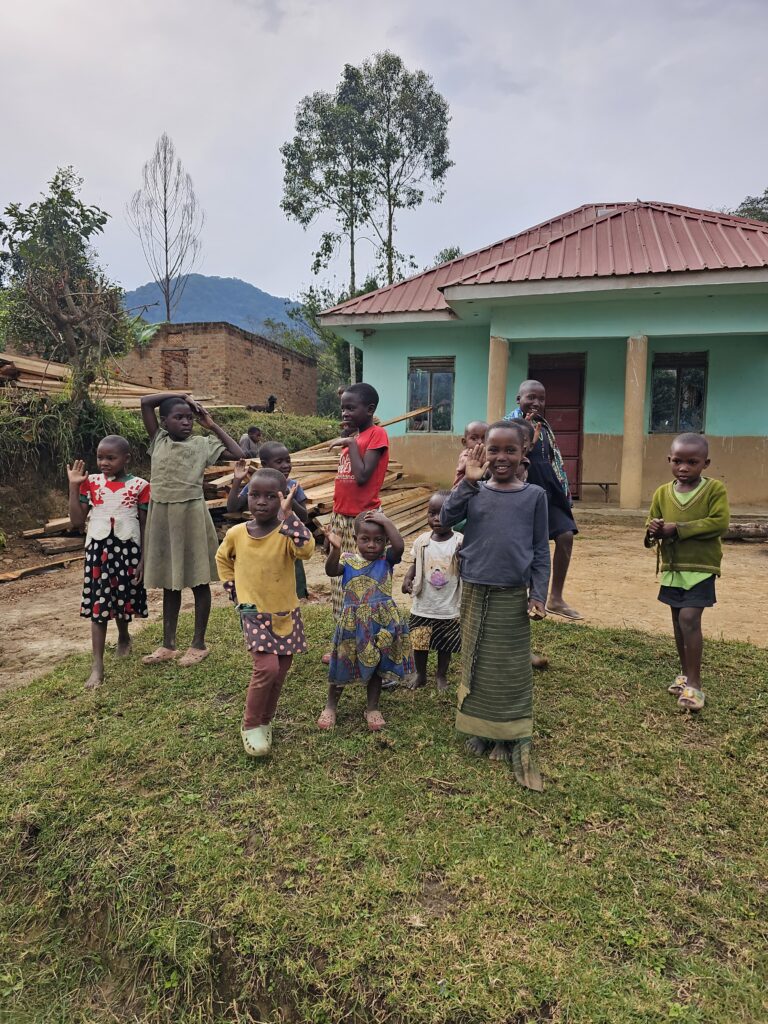
At the same time, I never perceived the people as pushy, as it was sometimes the case in Tanzania or Kenya. The only exception was the region near Bwindi National Park. We often had the impression there that the locals (especially the Batwa Pygmies) see the tourists as walking ATMs.
And one last point: safety. Rwanda has the reputation of being one of the safest countries in Africa. Uganda, however, can keep up well. Although even in the capital Kampala it is hardly advisable to walk alone through the city after sunset, crime outside the cities hardly seems to be an issue that tourists have to worry about.
Uganda is definitely a good destination and one of the better ones on the African continent. Ultimately, it is a matter of taste whether you like Uganda more than Rwanda, Kenya or Tanzania. Personally, I would rate Rwanda as about equally good and Kenya and Tanzania as slightly better because the countries still have a bit more to offer. However, there is also no shame in “losing” to these two countries, as they are, after all, among the best Africa has to offer.
In addition, my assessment was also mainly related to a trip that has safari as the main theme. Uganda also offers adventure tourism with the white water rafting in Jinja. If that is not enough, you can also visit the Sipi Falls in the east of the country. Or hike on the Rwenzori Mountains, which is the third highest peak in Africa after Mount Kilimanjaro and Mount Kenya.
The bottom line is that I can definitely recommend Uganda to everyone, even those who do not have much experience in Africa. Uganda is a pretty good beginner’s country in Africa, because it offers almost everything in terms of sights and activities, is not too expensive and at the same time it is safe. Not without reason the country has the nickname The Pearl of Africa.
Click here to find the trip reports of the 180+ other countries I have visited so far!
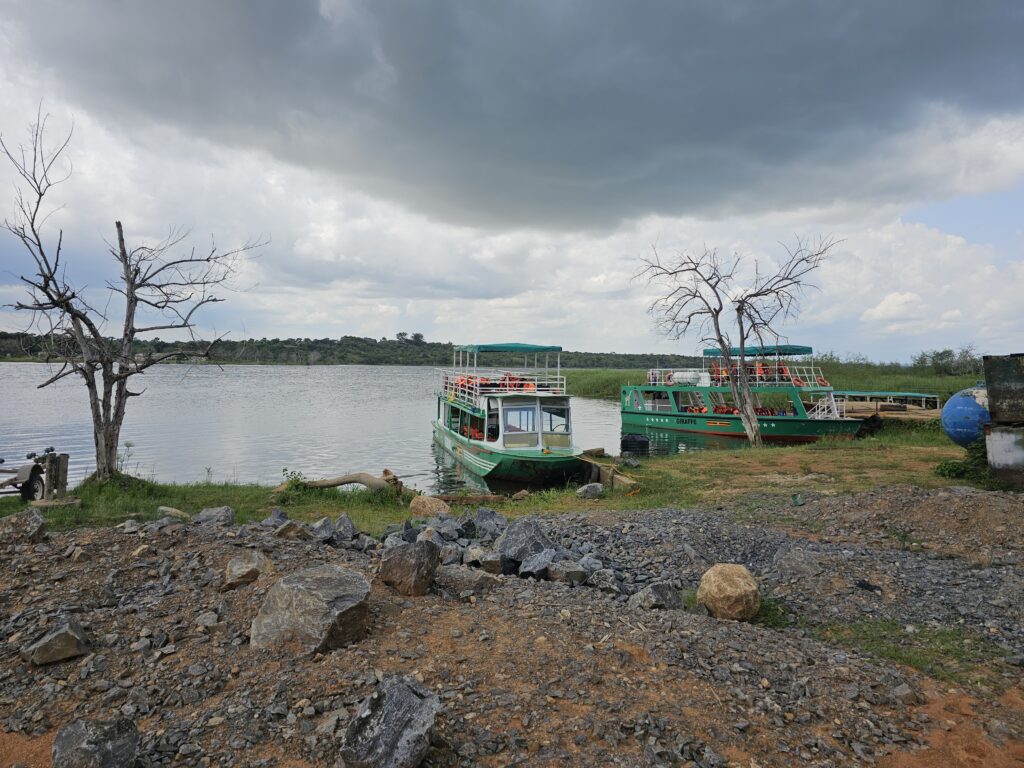
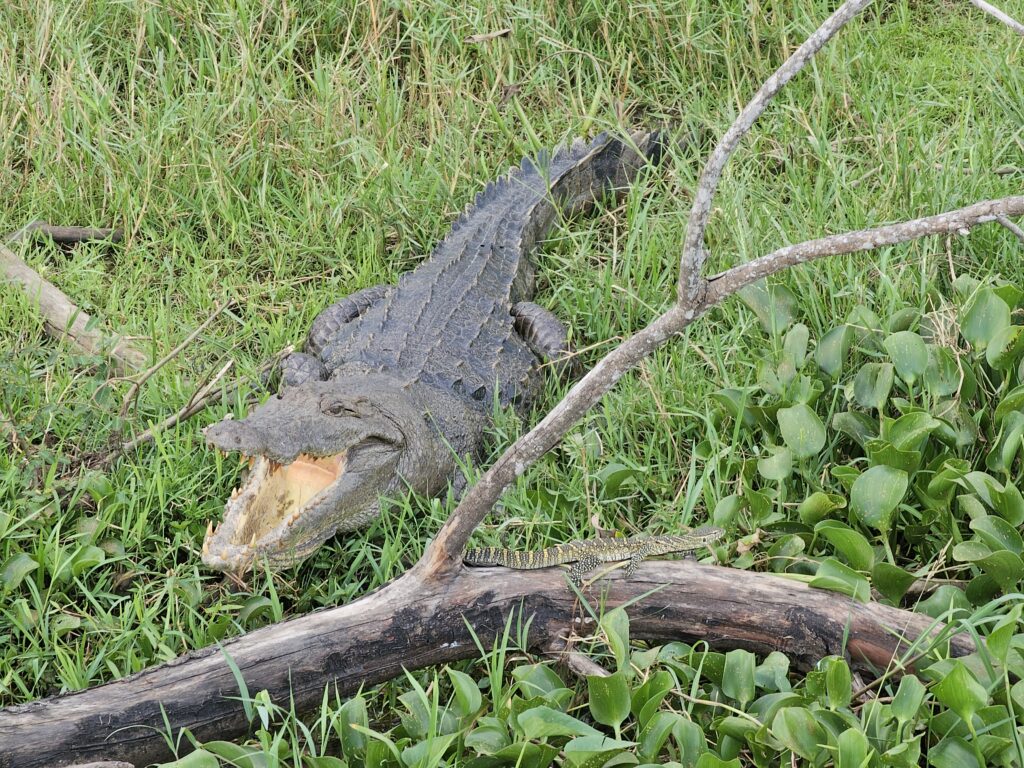
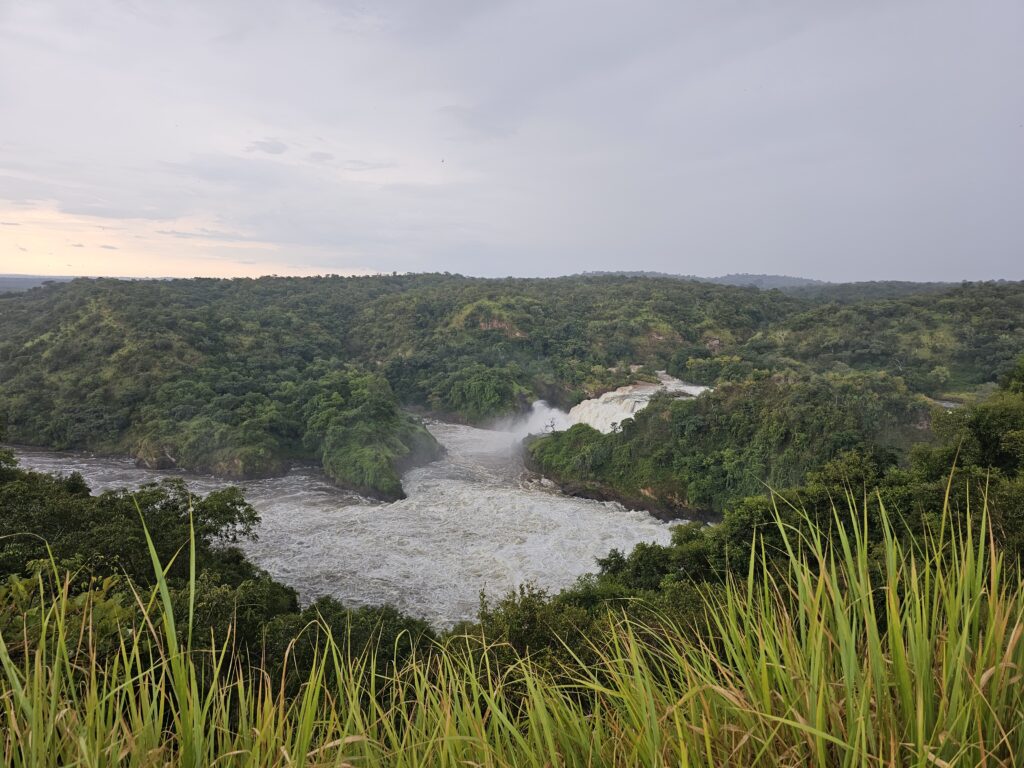
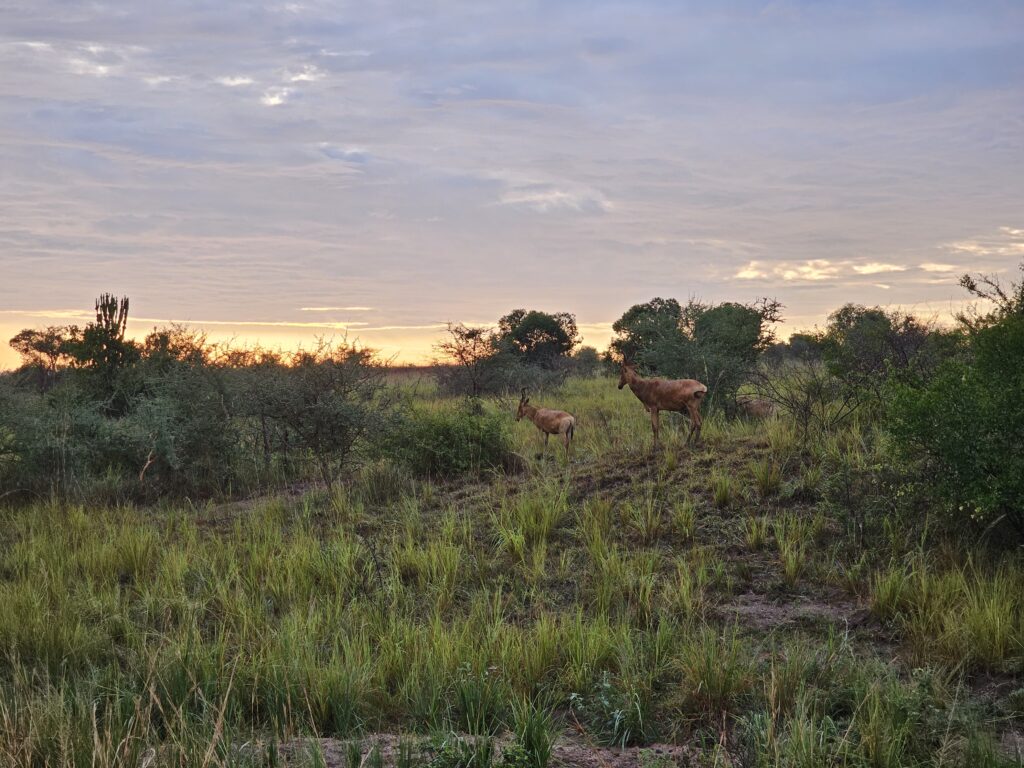
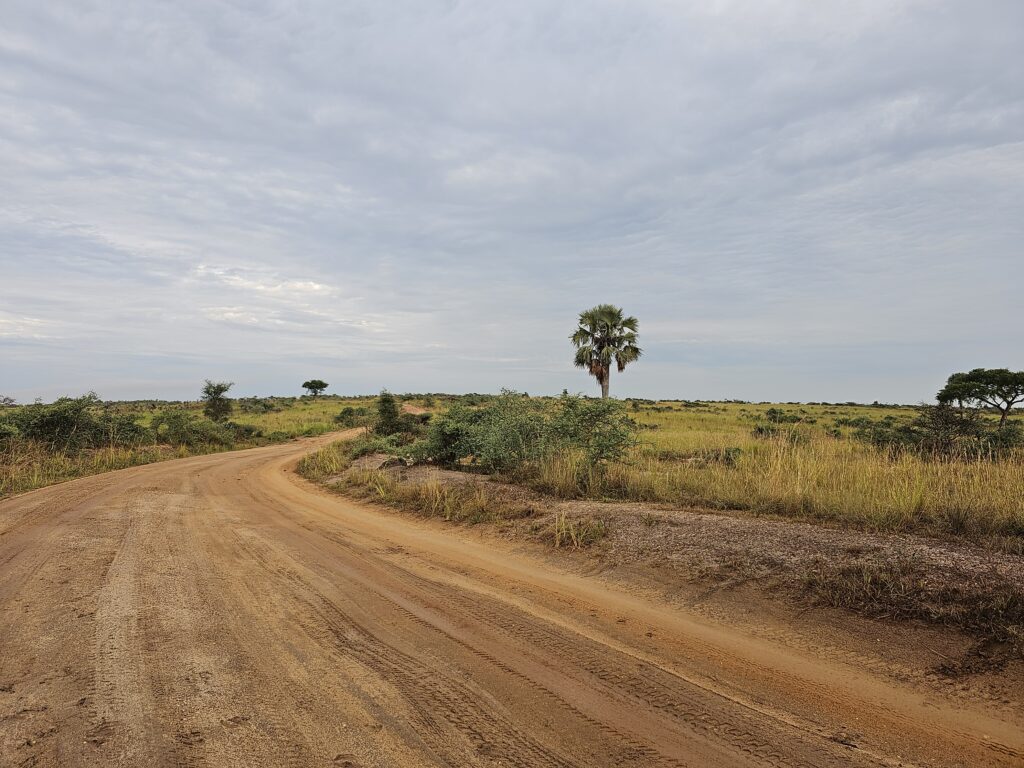
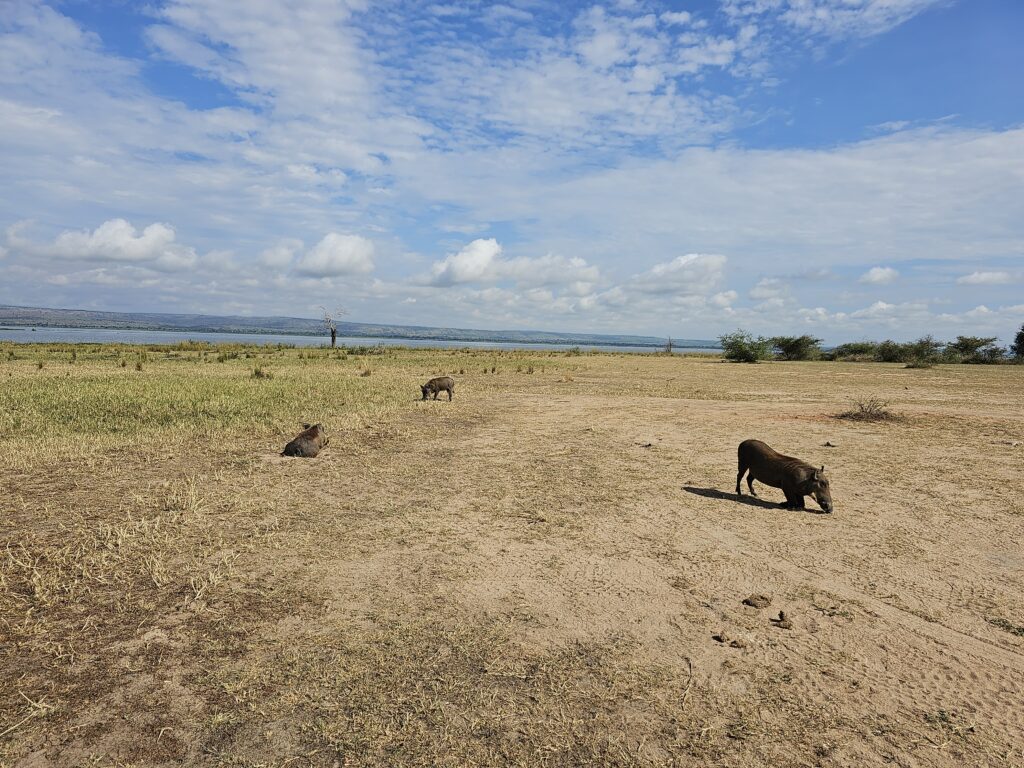
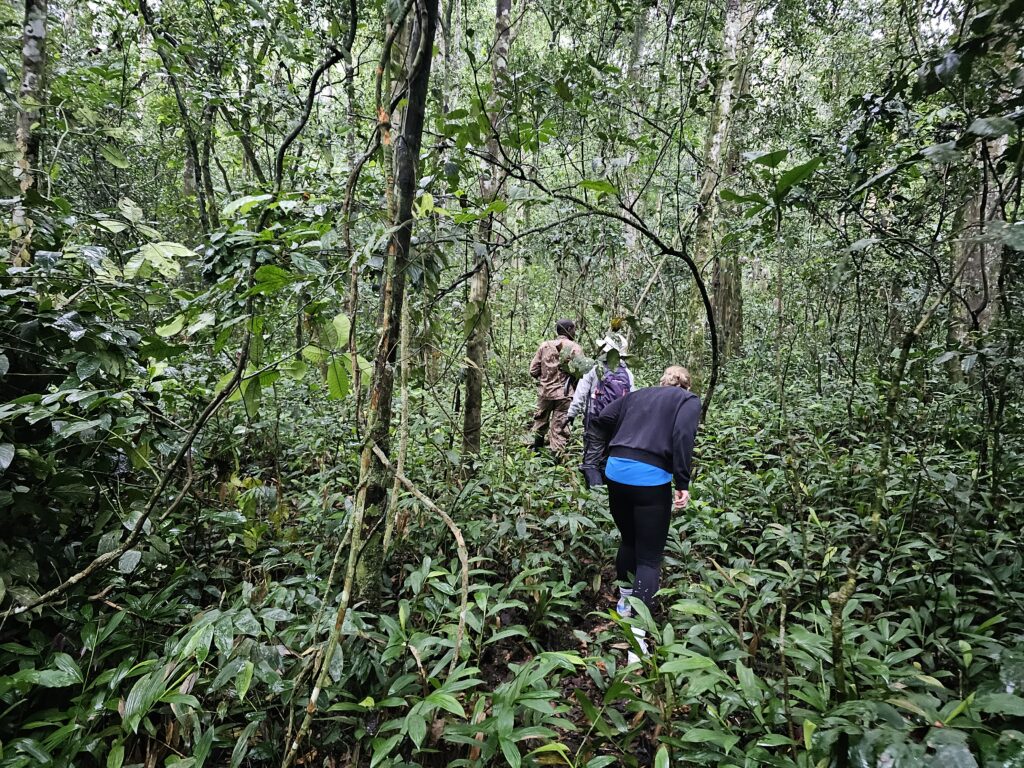
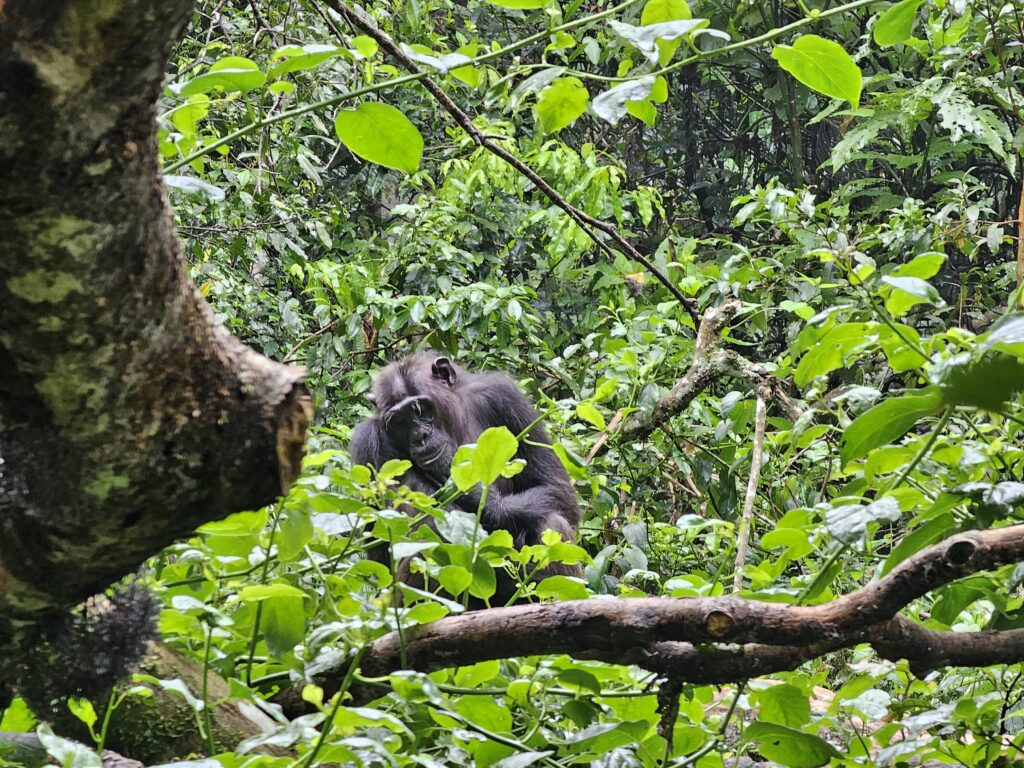
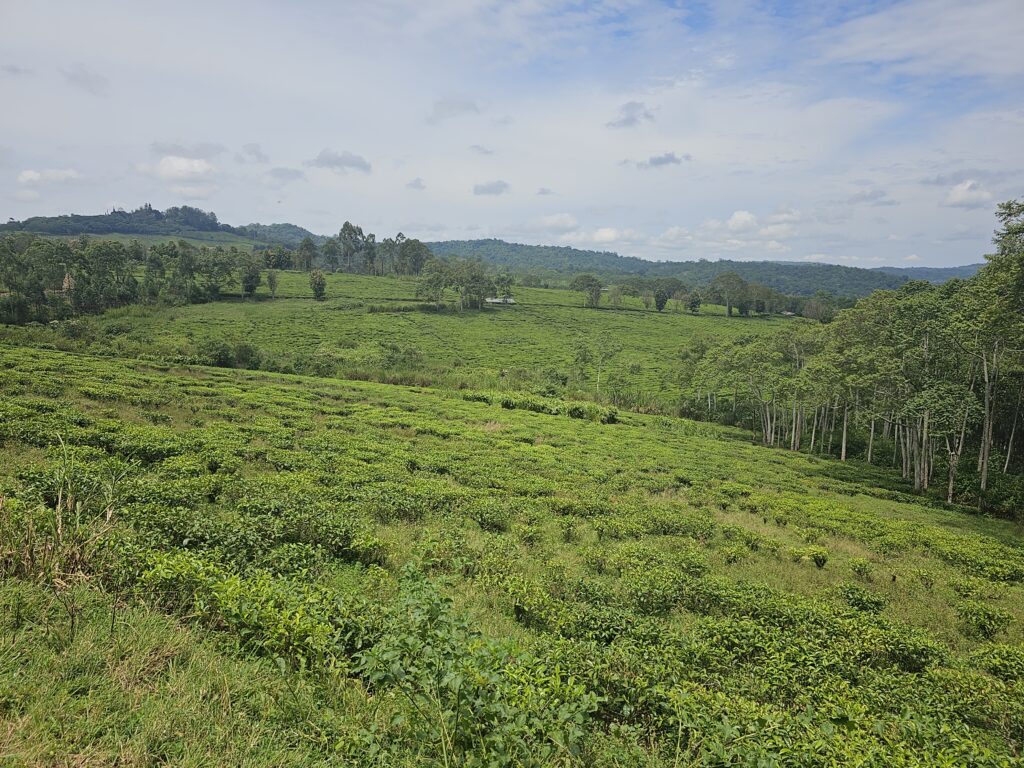
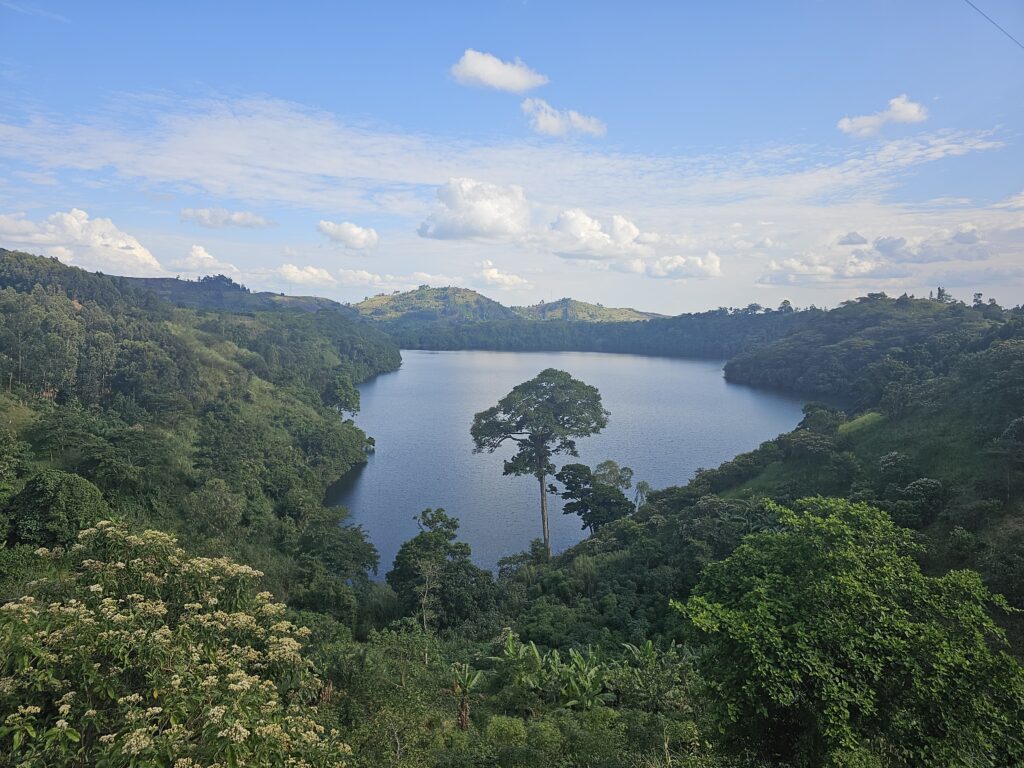
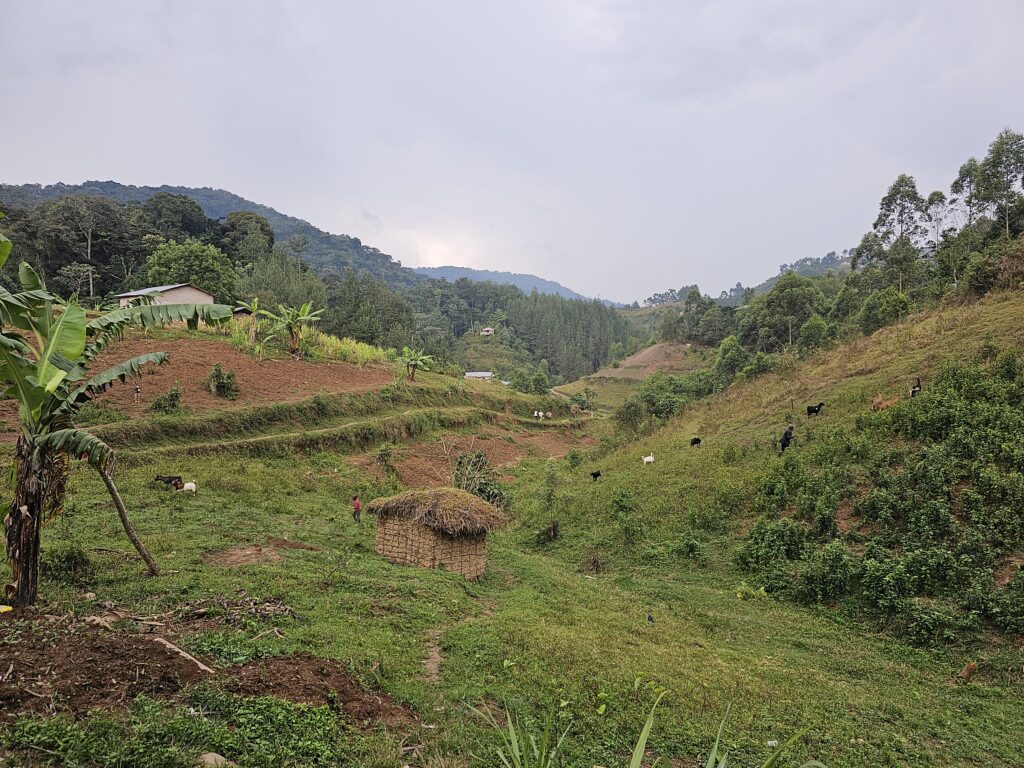
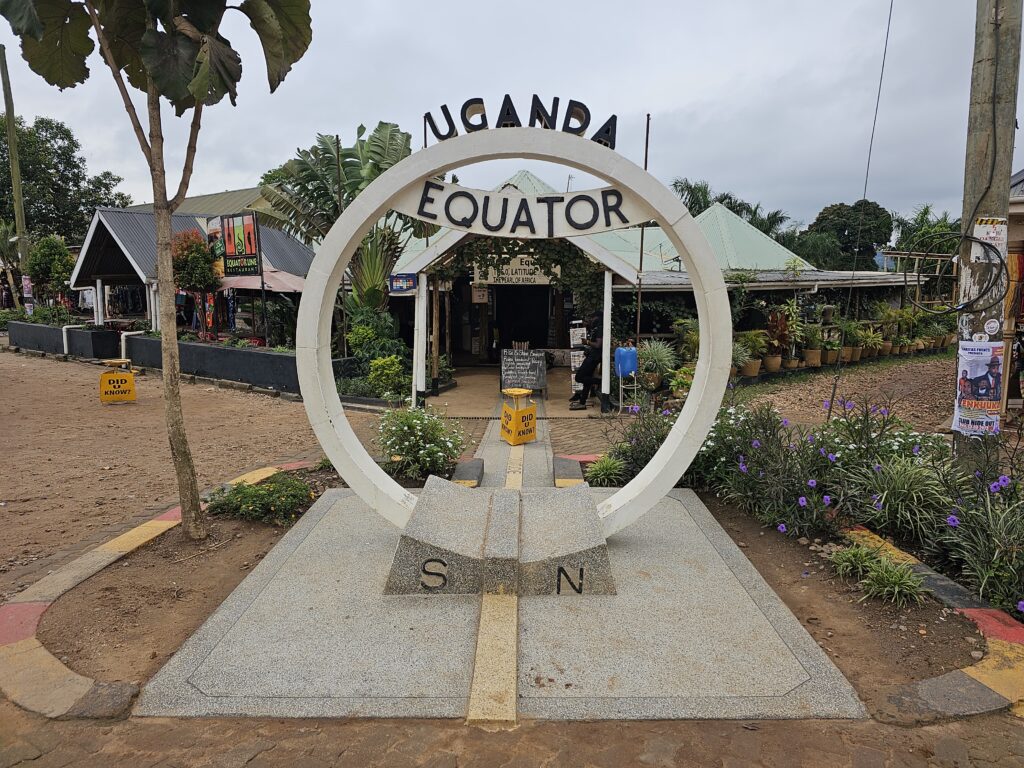
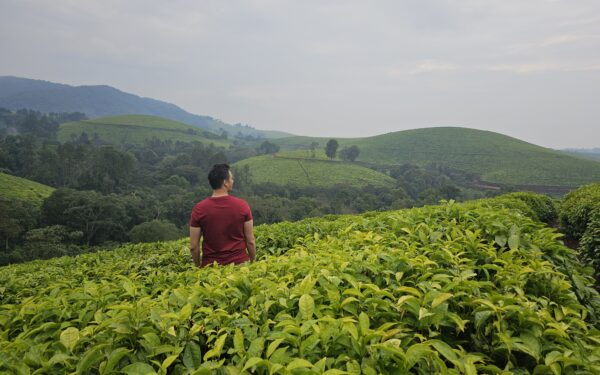
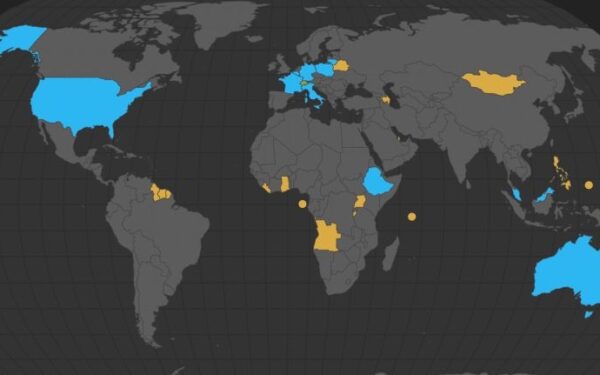
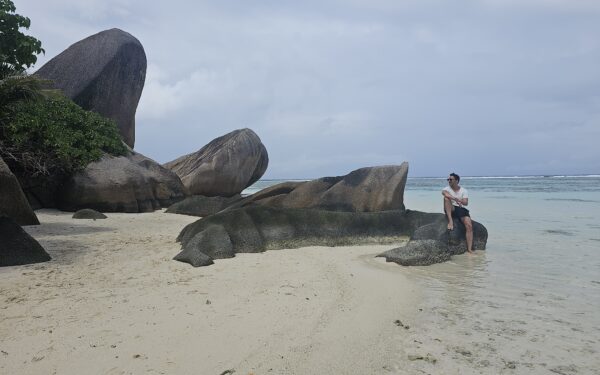
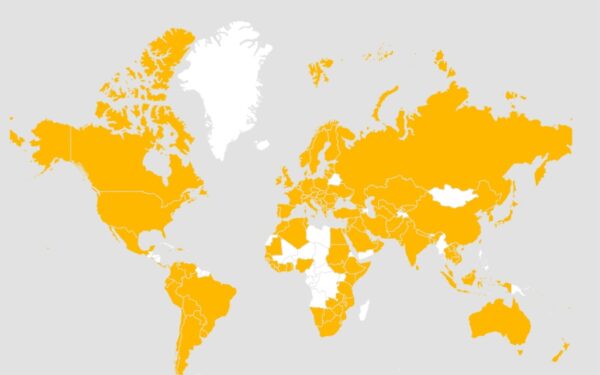
I really enjoy reading your trip reports! I did Uganda and Rwanda as a trip together back in 2022. I did your Uganda one with the same stops but in reverse order! We got really lucky watching an insane encounter between two silverbacks while in Bwindi.